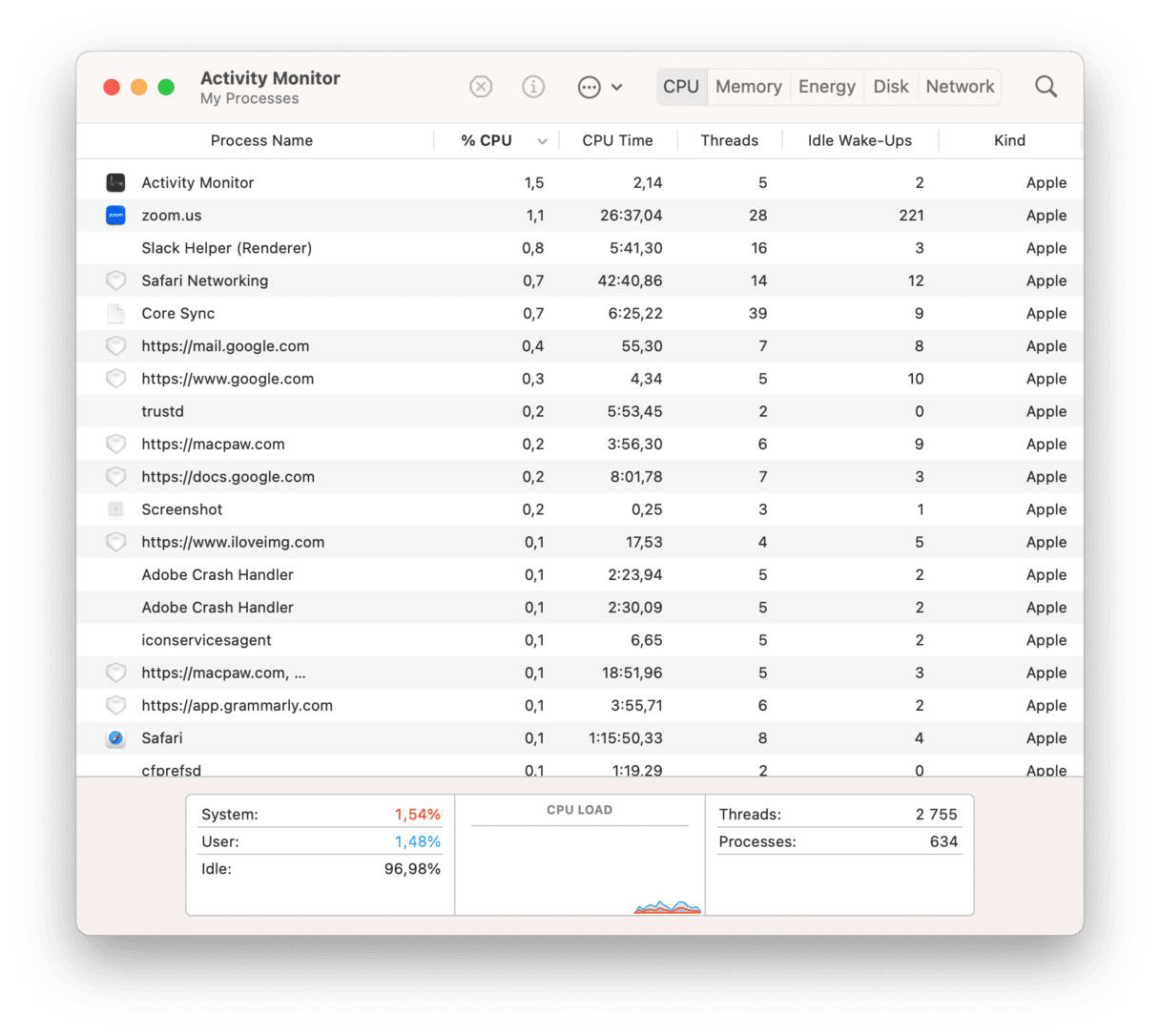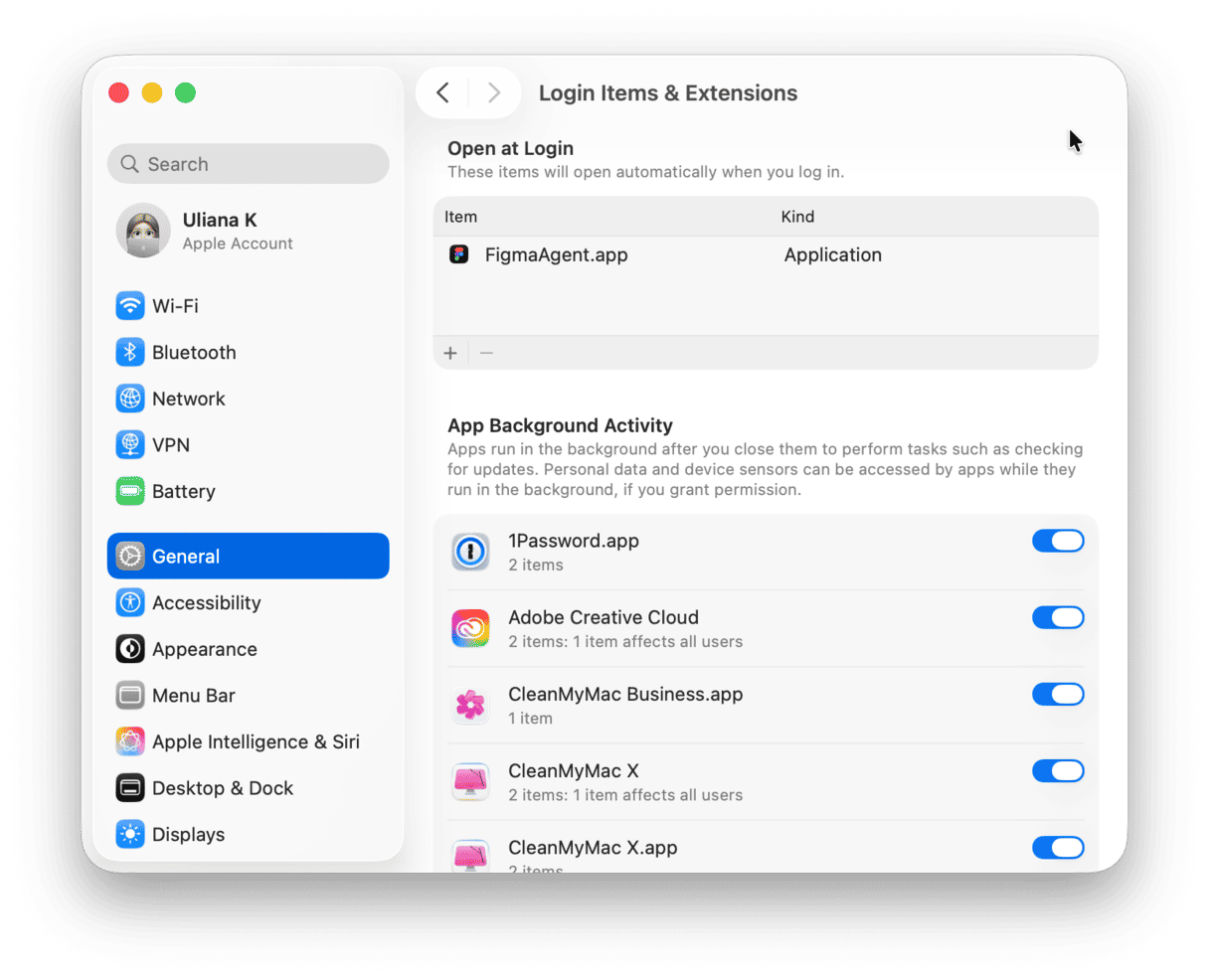If you’re used to using Control-Alt-Delete on a Windows PC to display the Task Manager and have recently switched to using a Mac, you’re probably wondering what the Mac equivalent to Control-Alt-Delete is.
Well, the bad news is that there isn’t a direct replacement. However, there are a few different ways to accomplish the same thing on a Mac, such as force quitting applications or checking on the system resources being used by applications. In this article, we’ll show you how.
The alternatives to Control-Alt-Delete on a Mac
The closest equivalent to the well-known Windows keyboard shortcut on a Mac is Command-Option (Alt)-Escape. Pressing those three keys together pulls up a window displaying currently running apps. It also shows you any apps that have hung and allows you to force quit them.
How to force quit applications on a Mac
- Press Command-Option-Escape.
- Choose the application you want to quit.
- Press Force Quit.

How to see more information about applications on the Mac
Windows Task Manager does more than just allow you to force quit misbehaving applications. It displays a list of currently running processes and shows you the proportion of available system resources they’re using. These can both be viewed on your Mac using Activity Monitor — a very handy tool tucked away in the Utilities folder.
How to use Activity Monitor
- Go to Applications > Utilities.
- Double-click on Activity Monitor.
- Click on any tab — e.g., CPU — to see the percentage of resources being used by running processes.
- Click on any column header to order processes according to their value in that column. Click the column header again to reverse the order.
- If you see a process that’s taking up too many resources, select it and click the “X” button in the toolbar to quit it.

Control hung and heavy-consuming apps with CleanMyMac
Most of the time, when your Mac is slow and unresponsive, there’s a particular app to blame. Some applications put too much pressure on Mac’s CPU, making your whole system slow. Detecting and quitting those apps can considerably improve your Mac performance.
With CleanMyMac, you can easily handle heavy consumers. It has a convenient Menu app, which briefly informs you on current CPU load and memory status and lets you monitor CPU and disk usage as well as lets you free up RAM when you need to. All you need to do is click a little iMac icon in the menu bar, and it will open.

If you cannot see the icon, open CleanMyMac and go to Settings in the main menu or press Command + , to open Settings. Navigate to the Menu tab and toggle on Enable Menu. Now, you can open the Menu App.
CleanMyMac is notarized by Apple, which proves it’s safe for your Mac. Get your free CleanMyMac trial — you can enjoy complete app functionality for 7 days without having to pay. It also has the Performance feature that can run different maintenance routines to keep your Mac in top shape.
Manage login items
Login items are applications and utilities that launch when you log into your account. They run in the background, so many users don’t notice them until they start consuming too much memory.
In Windows, you can manage login items using Control-Alt-Delete. Here’s how to do it on a Mac:
- Click the Apple menu and choose System Settings.
- Go to General > Login Items & Extensions.
- Select any login item you want to remove.
- Click the “–” button at the bottom of the window.

Force restart your Mac
If force quitting applications doesn’t solve problems you’re having with your Mac and the whole thing is frozen, you may need to restart it. However, if it has hung and all you can see is the beachball, you won’t be able to use the restart option in the Apple menu. In this case, press and hold the power button until you see the Apple logo on the screen. If you have a MacBook with a Touch Bar, the power button is the Touch ID button.
There is no direct alternative to Control-Alt-Delete on the Mac, and the Mac doesn’t have a task manager like Windows. However, there are several things you can do to replicate the features available in Task Manager, such as force quitting apps and viewing the status of resources on your Mac, not to mention third-party apps like CleanMyMac that can come in handy if you want more control over resource hoggers and your Mac’s overal health.







